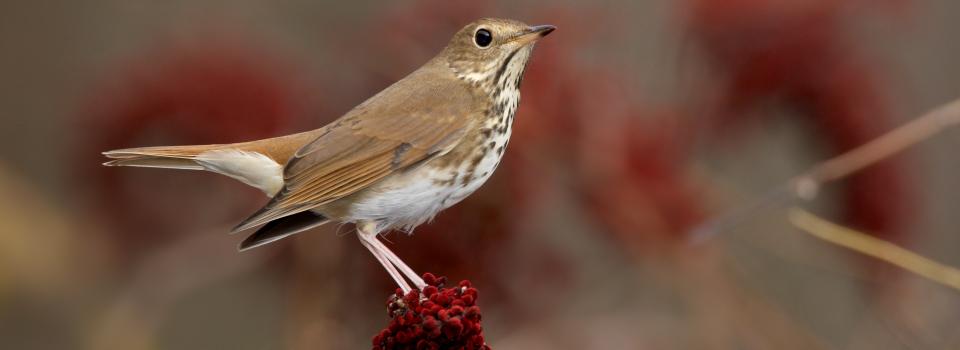
Hermit Thrush
Photo by: Robert Royse
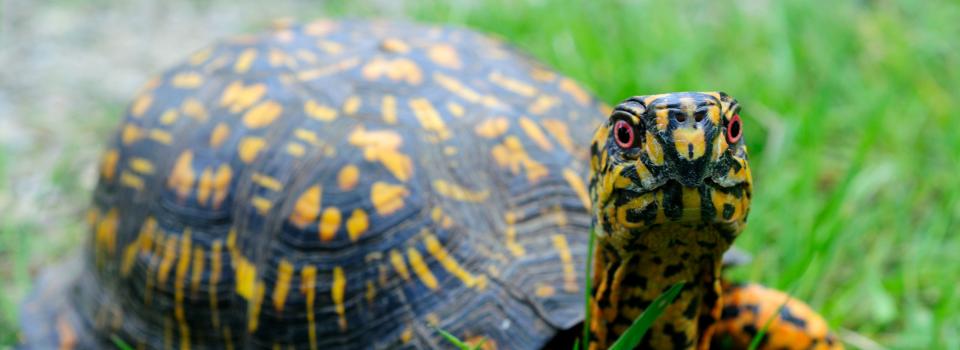
Box Turtle
Photo by: Jonathan Mays
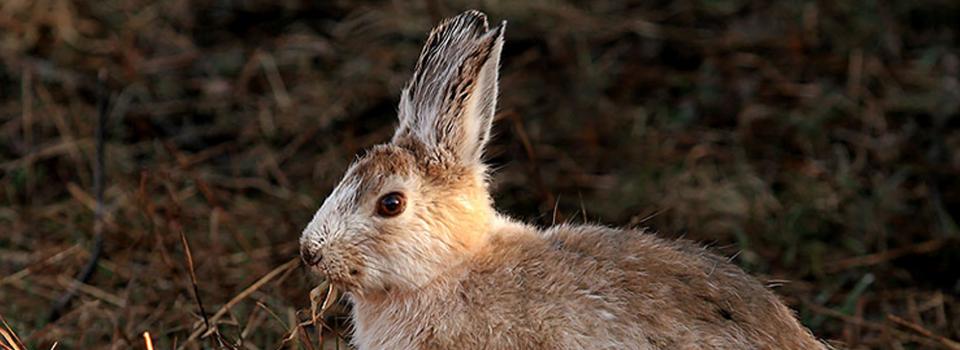
Snowshoe Hare
Photo by: Mike Hodgson

Timber Rattlesnake
Photo by: Kelly Wiley
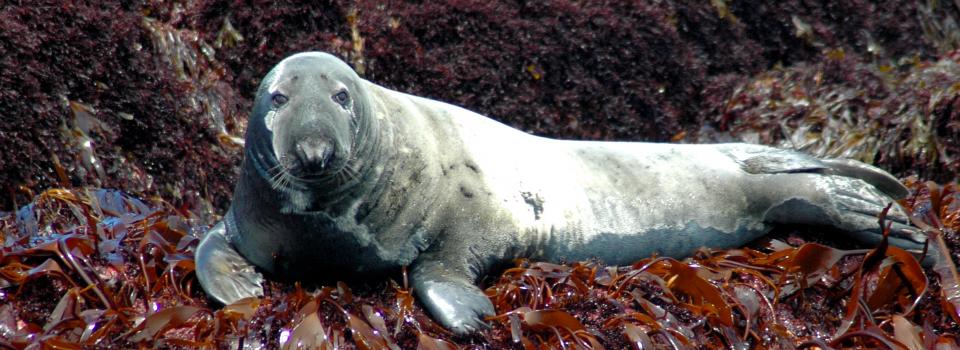
Gray Seal
Photo by: Jonathan Mays








The relationships between woodrat population dynamics and abiotic forest conditions and biotic pathogen loads have been speculated, but there have been few long-term studies to address these speculations. Our two-tiered study that will: Objective 1. Determine interactions between woodrat populations and forest dynamics using dendrochronology, mast production data, and inventories; Objective 2. (a) Determine incidence of raccoon roundworm (Baylisascaris procyonis) parasite load in raccoon feces, (b) population analysis based on previous mark/recapture data, (c) compare efficacy and detection patterns between live-trapping and remote cameras for detecting presence of Allegheny woodrats.
Obj. 1. Between October 1 and December 30 we analyzed tree cores at woodrat sites and masting sites (Fig. 3, Table 2, 3, & 4). We prepared the material for the project as a manuscript and we presented the research at the following venues: The Oak Symposium in Knoxville, Tennessee and at the Society of American Foresters Meeting in Albuquerque, New Mexico.
Obj. 2. During the 4th quarter we continued our camera-trapping study at 2 new sites to evaluate presence and activity patterns of Allegheny woodrats (Neotoma magister) and other species. Between 2-8 remote cameras were placed at 2 sites (Potomac-Garrett State Forest [Lostland Run] and Allegany County [Pinnacle Rocks]) between 15 October 2017 and 20 December 2017 (Figure 1) for a total of 476 trap-days (defined as the sum of 24 [hr] periods that each camera was operational) (Table 1). We compared the influence of different baits (peanut butter mixed with oats versus sardines) and distance from core-areas (i.e., interior portions of rock formations) to peripheral areas (i.e., interface of rock formations with surrounding forest) edge of int detection rates of woodrats. Raccoon scat samples were sent to Dr. Mahan at Penn-State Altoona for analysis. The Sheather’s fecal flotation method was used to analyze the samples for presence of endoparasitic eggs.
A total of 1338 independent detections were recorded, with 325 independent detections of woodrats, 80 independent detections of raccoons, and 15 independent detections of other carnivores (Figure 2). Interestingly, at Lostland Run, woodrats were detected 0.8 km from the nearest large rock formation. No woodrats were detected at Pinnacle Rock throughout the survey period. Peanut butter mixed with oats and sardines performed equally as well in attracting woodrats, but sardines attracted a greater variety of other animals to camera sites. If detecting other species in addition to woodrats, use of sardines may be a more effective bait. Woodrat detection rates were similar in core and peripheral areas. Peripheral areas were much easier to access for placing and monitoring cameras, and provided a greater variety of options for attaching cameras. Peripheral sites thus offer advantages as camera sites if the intention of the project is to determine presence or absence of woodrats, especially if the study involves multiple sites and is time limited.
Name: Sunshine L. Brosi, Ph.D
Title: Associate Professor of Biology
Organization: Frostburg State University
Name: Tom Serfass, Ph.D
Title: Professor
Organization: Frostburg State University
Name: Carolyn G. Mann, Ph.D
Title: Professor of Biology
Organization: Penn State Altoona
Name: Danielle J. Feller
Title: Western Regional Ecologist
Organization: Natural Heritage, MD DNR
Name: Greg Turner
Title: Endangered Mammal Specialist
Organization: PA Game Commission Bureau of Wildlife
Name: Tom Hall
Title: Forest Pathologist
Organization: Bureau of Forestry, PA DCNR
Name: Randy Fitzgerald
Title: Associate Proffessor of Environmental Studies
Organization: Montclair State University
Name: Gretchen Fowles
Title: GIS Specialist/Biologist
Organization: NJ Endangered & Nongame Species Program
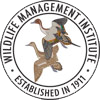
© 2020 A Wildlife Management Institute Project